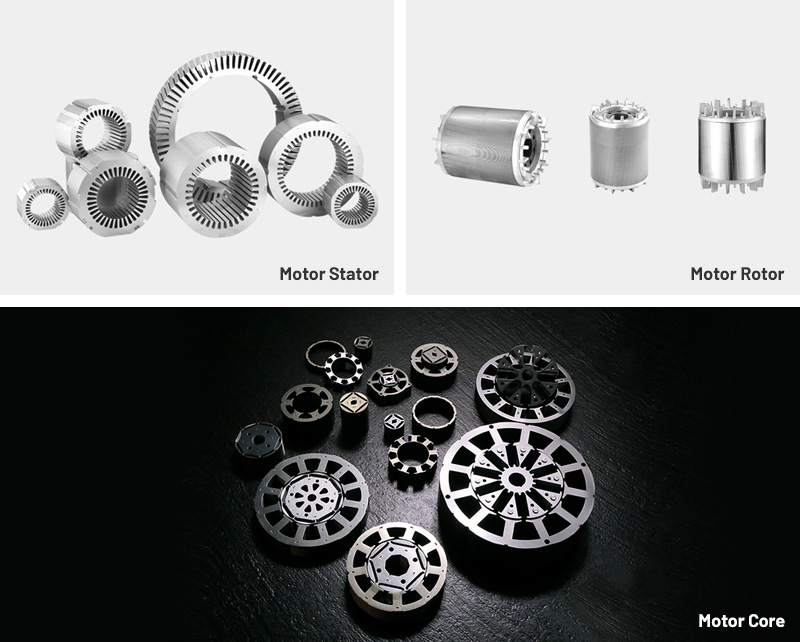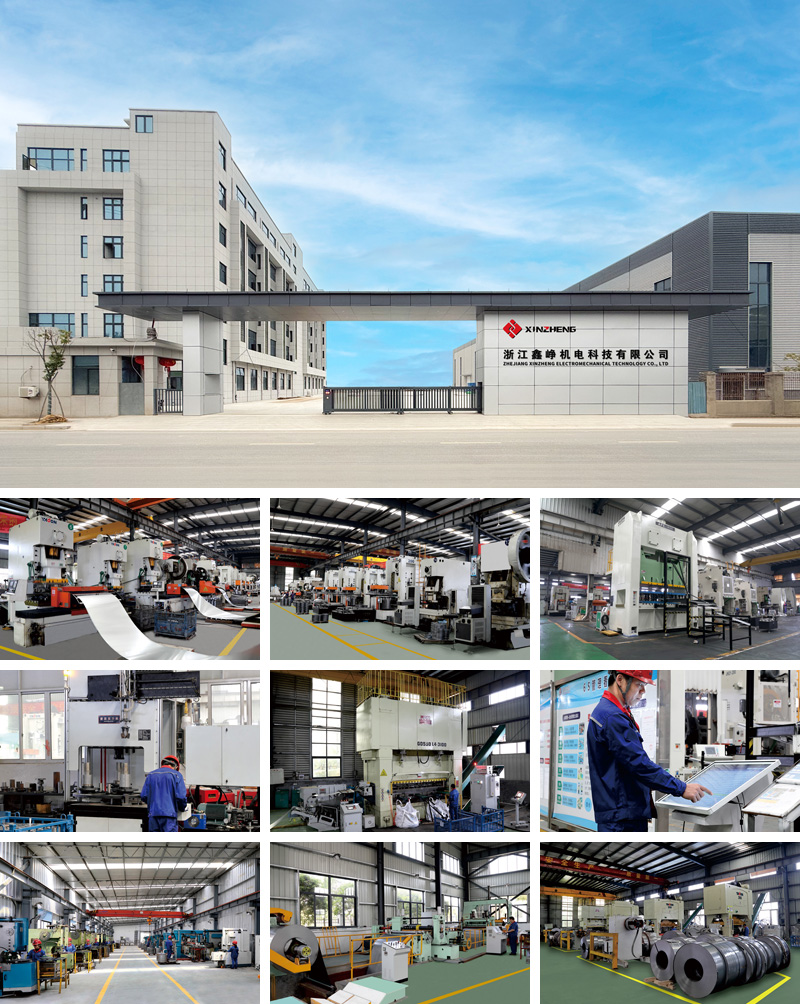Industrial electrification continues to expand across manufacturing, mining, infrastructure, and utility sectors, placing higher expectations on the efficiency and durability of electric motors. Ultra-premium efficiency motors—categorized internationally as IE5 and in China as YE5—represent the newest generation of high-performance induction motors designed to meet stringent energy standards. These motors operate with tighter electromagnetic tolerances, reduced core losses, and improved thermal behavior, all of which depend largely on the quality of their lamination stacks.
Within this growing market, low carbon steel YE5 motor laminations have gained increased attention from OEMs and component manufacturers. Their combination of refined magnetic properties, enhanced punchability, and dimensional stability aligns well with IE5-level efficiency requirements. As industries pursue long-term energy savings, reduced downtime, and compliance with sustainability frameworks, demand for higher-grade lamination materials continues to accelerate.
Electrical motor laminations form the stator and rotor cores. Their purpose is to channel magnetic flux efficiently while minimizing eddy currents and hysteresis losses. For YE5 motors, which target extremely low loss values, lamination materials must exhibit:
Low intrinsic core loss at standard and elevated temperatures
High magnetic permeability to support dense flux distribution
Tight dimensional tolerances for balanced electromagnetic fields
Mechanical robustness during stamping, stacking, and long-term service
Low carbon steel, when engineered as electrical steel with controlled chemical composition and optimized grain structure, supports these requirements effectively.
Low carbon electrical steel typically contains less than 0.05–0.08% carbon, reducing the formation of carbide networks that inhibit magnetic domain wall movement. This enhances magnetic softness, lowers hysteresis loss, and improves manufacturability. It also results in steel that:
Responds predictably to stress-relief annealing,
Produces minimal burrs during punching,
Maintains structural consistency during thermal cycling.
These properties make low carbon steel a preferred choice for YE5 cores where efficiency and stability hold equal importance.
Low carbon steel used in YE5 motor laminations is typically a refined non-oriented electrical steel (NOES) with:
Silicon content between 2.0–3.0% to reduce eddy current loss
Controlled aluminum and manganese additions for grain stabilization
A uniform grain size distribution to support consistent permeability
For YE5 applications, both 0.35 mm and 0.30 mm gauge steels are common. Thinner gauges decrease eddy current paths but require higher manufacturing precision.
The performance of low carbon steel YE5 motor laminations depends heavily on the accuracy of stamping dies. Key requirements include:
Low burr height, typically <10–15 microns
High positional accuracy of slots and tooth profiles
Minimal distortion after punching
Punching induces mechanical stresses that can degrade magnetic performance. To recover optimal magnetic properties, manufacturers often perform stress-relief annealing, which restores the steel’s original permeability and reduces loss.
Lamination coatings prevent short-circuiting between sheets and help manage core loss. For YE5 laminations, coatings must withstand thermal cycles associated with high-efficiency motor operation. Common options include:
Inorganic phosphate films for high thermal endurance
Hybrid organic–inorganic coatings with improved dielectric strength
High-temperature polymer coatings that maintain adhesion during long-term service
Coating uniformity is essential; micro-cracks or uneven thickness can lead to local hotspots and reduced efficiency.
Stacking quality directly affects the motor’s electromagnetic behavior. OEMs employ:
Interlocking designs for quicker assembly
Welded or cleated stacks for mechanical robustness
Bonded laminations using heat-cured adhesives for reduced noise and vibration
Bonded stacks are increasingly popular in YE5 motors because adhesive layers help suppress magnetostriction-induced noise.
Low carbon steel YE5 motor laminations must maintain low core loss across wide temperature ranges. Even small deviations in steel composition or annealing conditions can alter loss values significantly.
Tight tolerances ensure balanced electromagnetic forces and smooth torque output. Variations can cause torque ripple, noise, or efficiency reduction.
Degraded coatings increase interlaminar currents, accelerate heating, and shorten lifespan. Coating adhesion and thermal endurance are therefore crucial.
Stamping and handling introduce stresses that alter magnetic domain behavior. Proper tooling, lubrication, and annealing are essential to minimizing these effects.
Since magnetic properties vary across steel coils, batch traceability allows OEMs to correlate motor performance with material source, minimizing variability in final products.
When sourcing low carbon steel YE5 motor laminations, OEMs typically evaluate suppliers based on:
Reliable suppliers use certified NOES from reputable mills with documented magnetic performance at YE5-level specifications.
Advanced high-speed presses, CNC machining, and in-house die repair capabilities ensure dimensional accuracy and consistent quality.
Stress-relief annealing, coating application, ultrasonic cleaning, and precision stacking are essential capabilities for YE5-grade laminations.
Suppliers should perform:
Single-sheet tester (SST) measurements
Burr height analysis
Dimensional scanning
Coating dielectric tests
Stack loss measurement at operating temperatures
Large OEMs rely on stable supply chains with predictable lead times, controlled storage conditions, and batch-to-batch uniformity.
Despite technology improvements, several challenges remain in YE5 lamination production:
Rising costs of thin-gauge electrical steel, especially in global markets with tight supply
Inconsistent coating durability across different processing lines
Dimensional warping during annealing if temperature control is inadequate
Variability in press alignment causing uneven burr formation
Material fluctuations, as electrical steel’s magnetic properties can differ between supplier lots
These pain points underline the need for robust metrology, tooling maintenance, and supplier audits.
Continuous operation demands low core loss, stable magnetic properties, and minimal heating—qualities supported by low carbon steel YE5 motor laminations.
Ventilation systems in mining, tunnel construction, and HVAC rely on high-efficiency cores to reduce long-term energy consumption.
Tight torque ripple control and stable flux distribution are critical for machining accuracy and smooth spindle operation.
Motors used in chillers, cooling towers, and smart building HVAC systems benefit from reduced operating temperatures and improved power density.
Small wind turbines and auxiliary drives often adopt YE5 efficiency levels to enhance energy capture and reliability.
0.27-mm and 0.25-mm gauges are gaining adoption in next-generation YE5 motors. They reduce eddy currents further but require advanced stamping technology.
Bonded laminations reduce acoustic noise and improve stack rigidity, supporting quieter high-speed operation.
Research continues on hybrid materials that combine NOES benefits with partial grain alignment to enhance flux behavior.
Vision systems, laser scanning, and inline magnetic testers allow suppliers to detect defects earlier and improve repeatability.
Producers are adopting low-VOC coatings, recyclable packaging, and more efficient annealing furnaces to reduce carbon footprint.
Blockchain-based material traceability and digital certificates of analysis are becoming more common as customers seek transparent supply chains.
Q1. Why are low carbon steels preferred for YE5 motor laminations?
Low carbon content enables better magnetic softness, lower hysteresis loss, and improved punchability, all of which contribute to higher motor efficiency.
Q2. Do thinner laminations always improve YE5 motor performance?
They reduce eddy current loss but can decrease stacking factor or require more precise tooling. Benefits must be evaluated against manufacturing complexity.
Q3. What causes fluctuations in core loss between lamination batches?
Chemical composition variations, punch-induced stresses, coating irregularities, and annealing inconsistencies are common contributors.
Q4. How critical is coating quality for YE5 laminations?
Very critical. Coatings prevent interlaminar currents, stabilize temperature, and maintain long-term efficiency. Poor coatings lead to overheating and reduced motor lifespan.
Q5. What industries most commonly adopt YE5 motors?
Manufacturing automation, chemical processing, mining ventilation, HVAC, and energy-efficient building systems.
Product Category

Comprehensive Strength


Copyright © Zhejiang Xinzheng Electromechanical Technology Co., Ltd. All Rights Reserved.
This website uses cookies to ensure you get the best experience on our website.